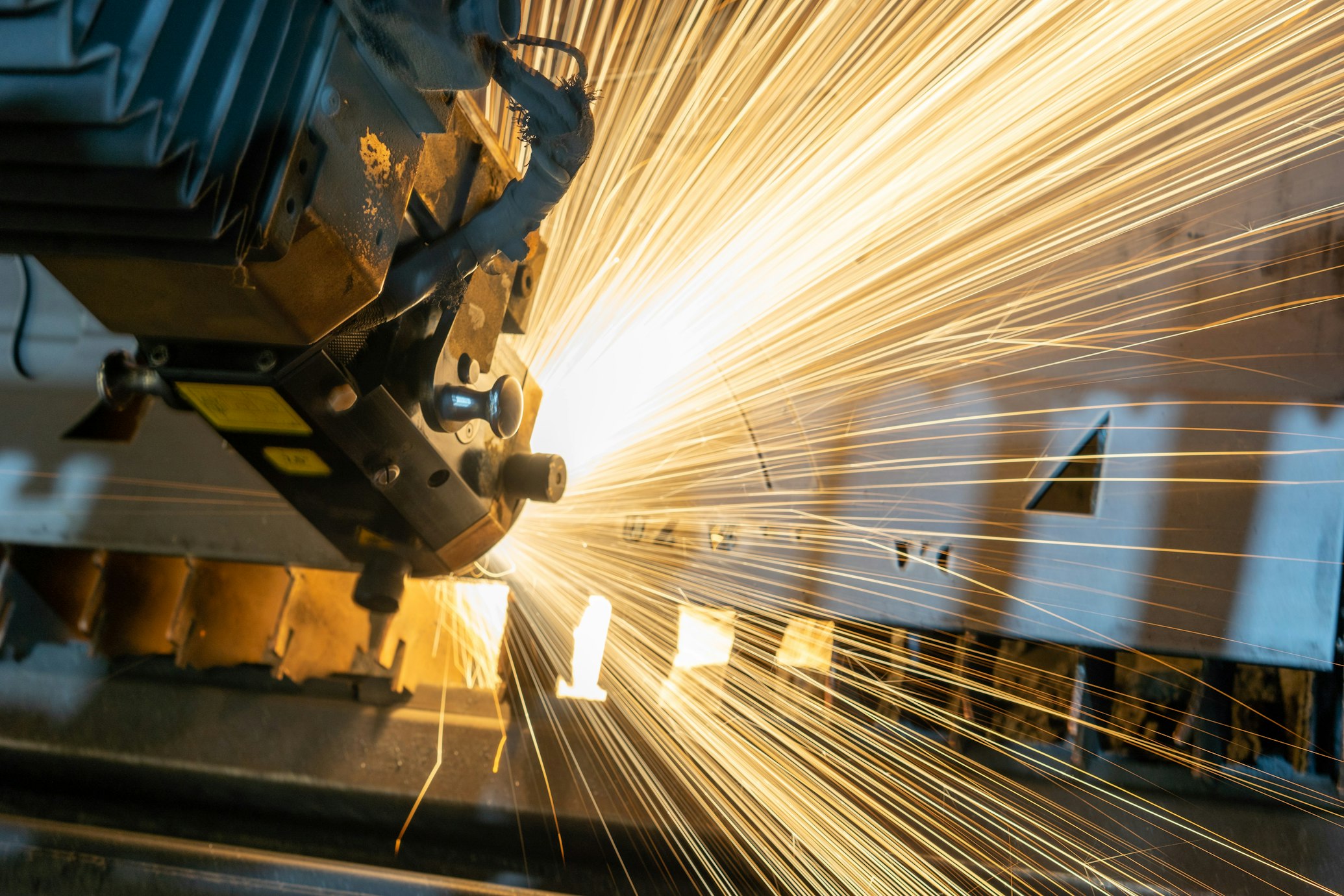Manufacturing Industry - your carbon footprint and how to reduce it

Do you work in the Manufacturing industry? Manufacturing is a significant contributor to global greenhouse gas emissions, making it crucial for companies to measure and reduce their carbon footprint. By implementing sustainable practices, you can not only contribute to a more sustainable future but also improve your company's reputation and appeal to environmentally conscious clients and investors.
On average, 45% of your carbon footprint will be from direct, scope 1 emissions
The carbon footprint of a company in the manufacturing industry is primarily composed of scope 1 (direct) emissions, energy consumption, supply chain emissions and product use & disposal.
Carbon Footprint of an Example SME in the Manufacturing Industry

How to reduce your carbon footprint from scope 1 (direct) emissions, energy consumption, supply chain emissions and product use & disposal
Reduce your scope 1 emissions
Scope 1 emissions are direct emissions. They come from sources owned or controlled by your company, like burning fuel in company vehicles or on-site equipment.
- Improve energy efficiency: invest in energy-efficient equipment and processes to reduce the amount of fuel consumed in operations.
- Fuel switching: replace high-emission fuels like coal or oil with lower-emission options such as natural gas or biofuels.
- Vehicle fleet management: opt for electric or hybrid vehicles and implement efficient driving practices to reduce fuel consumption.
- On-site renewable energy: install solar panels, wind turbines, or other renewable energy sources to power operations, decreasing the reliance on fossil fuels.
Minimise your energy use (scope 2)
Scope 2 emissions are indirect emissions. They come from the electricity, heat, or cooling that your company buys from outside providers. These emissions occur at the power plants that generate the energy but are related to your company’s consumption.
- Improve energy efficiency with LED lighting, smart thermostats, and efficient appliances.
- Enhance building design and insulation to reduce heating and cooling demand (we would recommend looking at the UK Green Building Council as a source of useful information).
- Switch to renewable energy sources, such as solar, wind, or hydroelectric power.
- Upgrade and maintain efficient HVAC (heating, ventilation and air-conditioning) systems.
- Foster employee awareness and engagement in energy-saving practices (we love the work our friends at Clever Carbon do on how to engage employees in sustainable practices).
- Implement energy management systems to track and optimise energy usage (take a look at the work Metrikus do!).
- Promote virtual meetings and remote work to save energy.
- Practice green procurement by selecting sustainable suppliers and partners.
Reduce your supply chain emissions
- Assess the carbon footprint of suppliers and prioritise low-emission partners or partners who have set a net-zero target and are actively reducing their carbon footprint.
- Engage with suppliers and support them to adopt sustainable practices.
- Collaborate with suppliers to reduce transportation emissions.
- Regularly evaluate and optimise supply chain operations.
Reduce the impact of product use and disposal
- Design products for durability, easy maintenance, and repair (Patagonia are a great example of a brand focussed on durability and ease of repair).
- Encourage consumers to use products responsibly and dispose of them properly.
- Offer take-back programs or recycling incentives for end-of-life products.
- Provide clear instructions for product disposal or recycling.
Make responsible choices in business travel
Business travel may not be the biggest contributer to your carbon footprint but addressing you business travel can be a good way of engaging your wider team in sustainable practices.
- Have virtual meetings where possible
- Encourage use of public transport and carpooling (Route Zero is a great tool to compare the carbon footprint of journeys)
- Direct flights: if air travel is necessary, choose direct flights to minimise layovers and reduce the overall carbon emissions associated with take-off and landing.
- Efficient trip planning: consolidate trips and plan efficient itineraries to minimise the amount of travel needed.
- Green vehicle rentals: if renting a vehicle is necessary, choose fuel-efficient, hybrid, or electric vehicles (we’re planning to try Green Motion for our next trip).
- Sustainable travel policies: develop and implement company-wide sustainable travel policies to guide employees in making eco-friendly choices and promote a culture of sustainability.
- Book eco-friendly accommodation: book environmentally conscious hotels or shared accommodation, like Airbnbs, that have lower emissions. To help you book environmentally conscious hotels, Staze is a platform that helps companies make net zero hotel bookings. Using Staze you can compare the carbon emissions of different hotels, just as you would compare their prices. Every booking made through Staze is offset for free, which means the platform invests in carbon reduction projects to counterbalance the emissions generated by your stay. Companies using Staze have reduced their emissions from hotel bookings by up to 70%.
Your next steps
To show your company is serious about sustainability and not simply using it as a buzzword, we recommend starting by measuring your carbon footprint (we used our friends at Zellar) and setting a science-based net zero target. By making conscious choices in business travel, energy consumption and waste management by using platforms like Staze, you can significantly lower your environmental impact while still achieving your business objectives.

